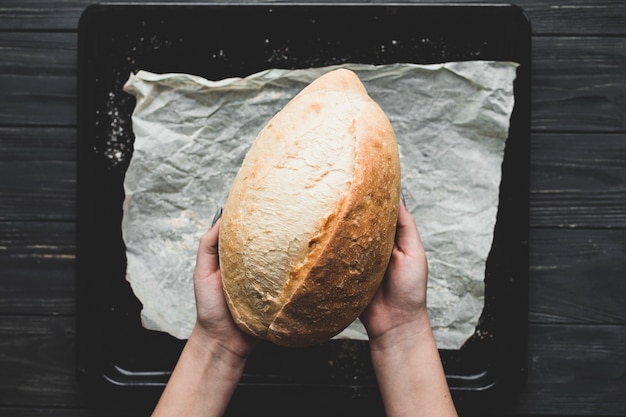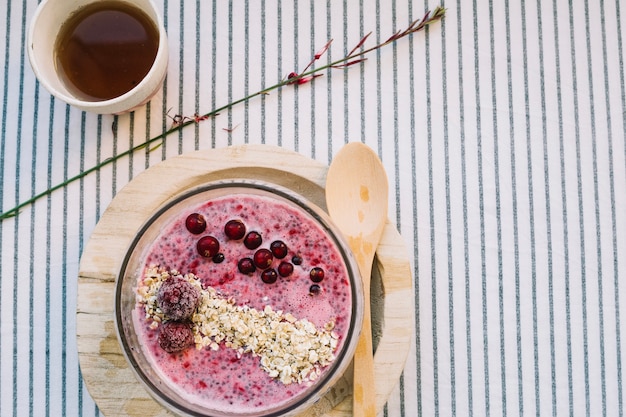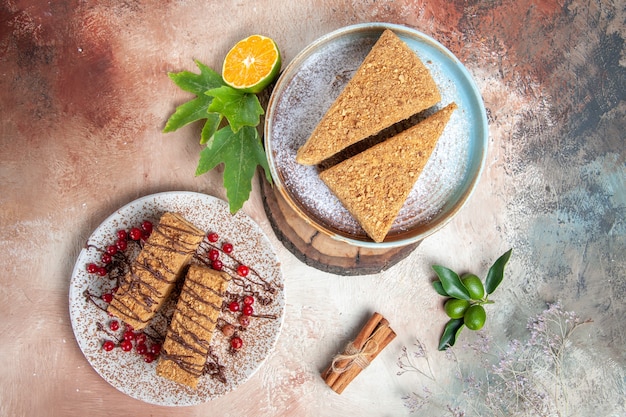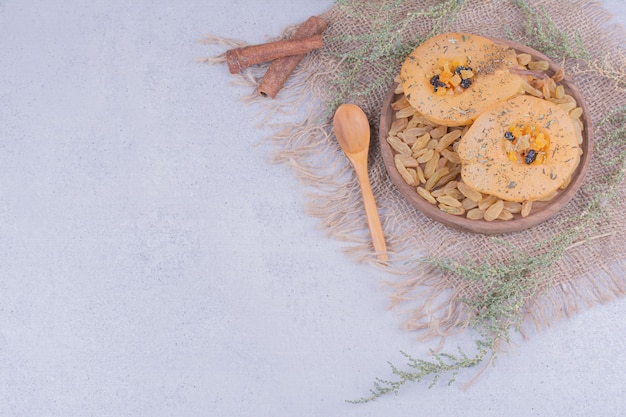Delicious Homemade Artisan Bread Recipe You Can Make at Home
Embracing the art of creating your own culinary masterpieces can be a rewarding endeavor. Whether you’re just starting to explore the world of baking or you’re already familiar with its nuances, the excitement of kneading dough and watching it transform in the oven is an experience like no other. This craft not only nourishes the body but also feeds the soul, creating a sense of satisfaction that comes with each baked creation.
In this guide, you will discover the joy of mixing simple ingredients to achieve remarkable outcomes. It offers a chance to connect with tradition while also allowing room for personal expression. The process of shaping and scoring the dough can be a meditative practice, fostering creativity and patience, as well as focusing one’s attention on the task at hand.
Regardless of your level of expertise in the kitchen, the following instructions will assist you in developing your skills and refining your techniques. Get ready to explore the wonderful world of baking, where the aroma of freshly baked goods fills your home, and each loaf tells a story of patience and passion.
Understanding the Basics of Yeast Bread Making
Creating a loaf at home can be both an art and a science, requiring a balance between ingredients, technique, and patience. It is a process that allows individuals to connect with the core principles of cooking, learning how simple components can transform into a remarkable product through careful manipulation and time.
At its heart, this craft involves several key elements: the choice of flours, liquids, yeast, and salt. Each of these plays a crucial role in the final outcome. Understanding how they interact not only enhances the journey but also empowers the creator to experiment and innovate.
The significance of fermentation cannot be overstated. Allowing the dough to rest and rise develops flavors and textures that are fundamental to the final creation. This stages the groundwork for achieving a pleasing aroma and a desirable crumb structure, contributing to a delightful eating experience.
Finally, the importance of technique should be recognized. Kneading, shaping, and baking are vital processes that require attention and practice. Mastering these skills can lead to a greater appreciation of the craft and the satisfaction that comes when pulling a freshly baked item from the oven.
Essential Ingredients for Made Artisan Bread
To create a delightful loaf, certain foundational elements play a crucial role. Each component contributes uniquely to the texture, flavor, and overall success of the final product. Understanding these key ingredients will empower you to achieve a consistently satisfying bake every time.
Key Components
| Ingredient | Purpose |
|---|---|
| Flour | Forms the structure; high-protein varieties yield better gluten development. |
| Water | Hydrates the flour, activates gluten, and aids fermentation. |
| Yeast | Responsible for leavening; enables the dough to rise. |
| Salt | Enhances flavor, controls fermentation, and strengthens gluten. |
Optional Additives
In addition to the primary elements, specific enhancers can elevate the final creation. Various ingredients like sweeteners, fats, and seeds not only provide diverse flavors but can also influence the texture and moisture of the loaf. Experimenting with these additives may allow for a more personalized touch to your baking endeavors.
Step-by-Step Bread Preparation Techniques
Creating a flavorful loaf can seem daunting, but following a structured approach can simplify the process. This section provides a clear outline of the essential techniques necessary for successful outcomes, regardless of prior experience.
Essential Techniques
- Mise en Place: Prepare all ingredients and tools before starting. This ensures a smooth workflow.
- Kneading: This process develops gluten, giving structure and elasticity to the dough. A mix of hand and machine techniques can be utilized.
- Fermentation: Allow the mixture to rest, enabling flavors to develop and the dough to rise effectively.
- Shaping: Properly form the dough into desired shapes. This step is crucial for final appearance and texture.
Final Steps
- Proofing: Let the shaped dough rest again, allowing for a final rise before baking.
- Baking: Ensure the oven is preheated to achieve the right crust and crumb consistency.
- Cooling: Once removed from the oven, allow the creation to cool completely before slicing. This helps set the texture.
- Storage: Keep in a cool, dry place, or consider wrapping for longer freshness.
Common Mistakes to Avoid When Baking
Mastering the art of baking requires not only skill but also awareness of potential pitfalls. Recognizing these common errors can significantly enhance your outcomes, ensuring that your creations turn out as intended. Here are key missteps to be mindful of during the process.
- Inaccurate Measurements: Precision is crucial in the culinary world. Always measure ingredients carefully to avoid undesirable textures and flavors.
- Skipping the Preheating Step: Failing to preheat your oven can result in uneven cooking. Make sure the oven is at the right temperature before placing your dish inside.
- Ignoring the Dough’s Consistency: Each mixture has its own unique feel. Pay attention to the texture and adjust accordingly to achieve the right balance.
- Using Expired Ingredients: Freshness matters; expired yeast or baking powder can ruin your efforts. Always check dates before starting.
- Overmixing: While thorough mixing is essential, excessive agitation can lead to tough outcomes. Find the balance to maintain a light and airy quality.
- Not Allowing Proper Rising Time: Patience is key; give your mixture adequate time to rise for optimal flavor and texture.
Avoiding these common blunders can elevate your baking experience, leading to better and more enjoyable results. Keep these tips in mind as you embark on your culinary journey!
Flavor Variations for Unique Breads
Exploring diverse taste combinations can elevate your baking experience and lead to remarkable creations. Enhancing the standard loaf with distinct flavors not only adds excitement but also transforms the final product into a culinary masterpiece. Here are some interesting options to consider.
Herb Infusions
Incorporating fresh or dried herbs can impart a fragrant quality that matches various dishes. Consider these suggestions:
- Rosemary and garlic for a savory touch.
- Basil and sun-dried tomatoes for an Italian flair.
- Thyme and parmesan for a nutty, earthy flavor.
Sweet Additions
Adding sweetness can create unique tastes that complement breakfast or tea time. Some popular choices include:
- Cinnamon and raisins for a comforting, sweet experience.
- Dried cranberries and orange zest for a refreshing twist.
- Honey and walnuts for a rich, indulgent treat.
Experimenting with these flavor variations can lead to outstanding results, capturing the essence of creativity in each bite.
Tips for Perfecting Your Baking Skills
Baking is both an art and a science, requiring practice, patience, and attention to detail. Whether you are looking to enhance your techniques or explore new methods, there are several strategies that can help elevate your culinary creations to the next level.
1. Understand Your Ingredients: Quality components play a vital role in achieving outstanding results. Invest time in learning about different types of flour, yeast, and other additives. Each ingredient impacts texture and flavor, so knowing their properties can help you make informed choices.
2. Master the Basics: Before attempting intricate projects, ensure you have a solid grasp of fundamental techniques. This includes kneading, folding, and shaping, which set the foundation for successful outcomes.
3. Control Your Environment: Temperature and humidity can significantly affect the outcome of your creations. Aim for a consistent environment by adjusting your workspace as needed. Consider using a thermometer and hygrometer to monitor conditions.
4. Practice Patience: Allowing adequate time for fermentation and proofing is crucial. Rushing these processes can lead to dense and uninspired results, while giving them proper time often leads to delightful transformations.
5. Experiment and Take Notes: Baking is about discovery. Don’t hesitate to try new methods or tweak existing ones. Keep a journal of your experiments, noting what works and what doesn’t, so you can refine your approach over time.
6. Seek Feedback: Sharing your creations with friends and family can provide valuable insights. Constructive criticism can help you understand how your work is perceived and where improvements can be made.
7. Embrace Mistakes: Every misstep is an opportunity to learn. Analyze what went wrong, adapt your techniques, and remember that every great baker has faced challenges along the way.
Q&A: Artisan bread recipe to make
What are the key ingredients needed to make artisan bread?
To make artisan bread, you’ll need a few essential ingredients: flour (preferably bread flour for its higher protein content), water, yeast (active dry or instant), and salt. Some recipes may also include additional ingredients like sugar or a sourdough starter for added flavor. The quality of your ingredients can significantly affect the final product, so it’s important to choose high-quality flour and fresh yeast for the best results.
Can beginners successfully make artisan bread at home?
Absolutely! Artisan bread is quite accessible for beginners. While the process may seem daunting at first, most recipes require minimal equipment and ingredients. The key is to be patient and give the dough time to rise and develop flavor. Following a straightforward recipe step-by-step, while practicing techniques like kneading and shaping, will help you gain confidence. It’s also beneficial to start with no-knead recipes, which can yield delicious results with less effort.
What tips can you provide for achieving the perfect crust on artisan bread?
To achieve a perfect crust on your artisan bread, consider the following tips: First, create steam in your oven during the initial baking phase. This can be done by placing a pan of water in the bottom of the oven or using a Dutch oven with its lid on. Second, ensure your oven is fully preheated to a high temperature (typically around 450°F or 230°C) before placing the dough inside. Lastly, avoid opening the oven door excessively while baking to maintain the heat and steam necessary for a crusty exterior.
How do I know when my artisan bread is properly baked?
Knowing when artisan bread is properly baked can be identified through a few key indicators. First, the crust should be a deep golden-brown color. Second, when you tap the bottom of the loaf, it should sound hollow. Additionally, using a food thermometer can help; the internal temperature of the bread should register between 190°F to 210°F (88°C to 99°C) for optimal doneness. Lastly, let the loaf cool on a wire rack before slicing to allow the crumb structure to set.
How do you make the easiest yeast bread that you’ll ever bake?
To make the easiest yeast bread, you’ll need just 4 simple ingredients: flour, water, instant yeast, and salt. Combine them in a mixer, and knead the dough until smooth. Allow the dough to double in size, then shape the bread. Preheat the oven, and bake the bread in a cast iron or Dutch oven for 30 minutes until it’s golden and crusty.
What are the steps to shape the dough for a homemade artisan bread?
After the dough has doubled in size, transfer the dough onto a floured surface. Gently shape the dough into a round or oval loaf, depending on your preference. Use a sharp knife or bread lame to score the top of the dough, which allows it to expand while baking.
Why is it important to preheat the oven when baking yeast bread?
Preheating the oven ensures that the bread begins baking at the right temperature, which is crucial for achieving a crusty exterior and a well-cooked interior. For the best results, especially for crusty bread recipes, it’s recommended to preheat the oven to a high temperature, typically around 450°F.
What type of flour is recommended for making crusty bread?
Bread flour is recommended for making crusty bread because it has a higher protein content, which produces more gluten. This results in a chewier, more elastic dough, which is ideal for artisan-style breads.
How do you bake yeast bread without a Dutch oven?
If you don’t have a Dutch oven, you can bake the bread on a baking stone or heavy baking sheet. Place a pan of water on the bottom rack of the oven to create steam, which helps develop a crusty exterior. Bake for 30 minutes or until the bread is golden and sounds hollow when tapped.
What are the benefits of using instant yeast in a homemade bread recipe?
Instant yeast is convenient because it doesn’t require proofing in water before use. It can be mixed directly with the flour and other ingredients, saving time. Additionally, it helps the dough rise quickly, making it ideal for easy homemade bread recipes.
Why is this homemade bread recipe considered forgiving?
This recipe is considered forgiving because it allows for variations in ingredients and technique. Whether you’re new to baking or experienced, the dough is flexible, and small mistakes won’t drastically affect the outcome. It’s perfect for those making bread for the first time.
How can you ensure that the center of the bread finishes cooking properly?
To ensure the center of the bread finishes cooking, use an instant-read thermometer to check the internal temperature of the bread. It should reach at least 190°F for a fully baked loaf. If the crust is browning too quickly, you can tent the bread with aluminum foil.
What is the best way to bake bread with a crusty exterior?
For a crusty exterior, bake the bread in a preheated cast iron or Dutch oven. The enclosed space traps steam, which helps develop a crunchy crust. After 20 minutes, you can remove the lid and bake for an additional 10 minutes to brown the top.
How do you make this artisan bread recipe in 5 steps?
To make this artisan bread recipe in 5 steps, first, combine the ingredients in a mixing bowl and knead. Next, allow the dough to rise until doubled in size. Shape the dough, then preheat the oven with a Dutch oven inside. Finally, bake the bread in the hot Dutch oven for 30 minutes until crusty and golden.






